Natural History Illustration and Life Long Learning: The Field Studies Council
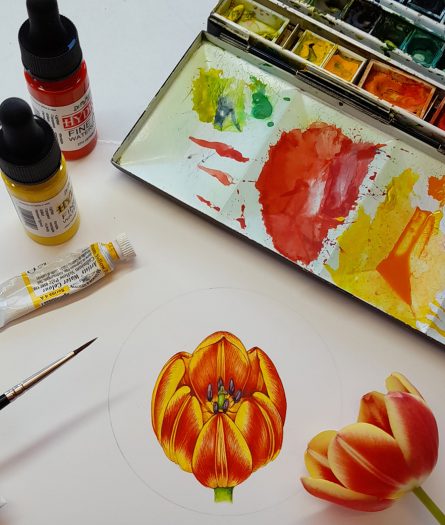
Natural History Illustration and Life-long learning: Field Studies Council Courses is my blog all about how much I love the FSC courses I attend. And no, they’ve not paid me to wax lyrical, honest!
I draw and paint a wide range of different species for publishers, charities, packaging, ad companies, and design agencies. I am expected to know something (often a lot!) about the plants and animals I’m commissioned to illustrate. As well as art school, I was lucky enough to do a Zoology degree, but this was many years ago now and a good deal of what I learned is now out of date.
Why Learn more?
Topping up my botanical and natural history knowledge is vital, and one of the best (and most fun) ways I’ve found to do this is by taking FSC Courses. The more I know about a plant or an animal, the better able I am to understand it, and fit its form to its function. More understanding means better natural history illustration.
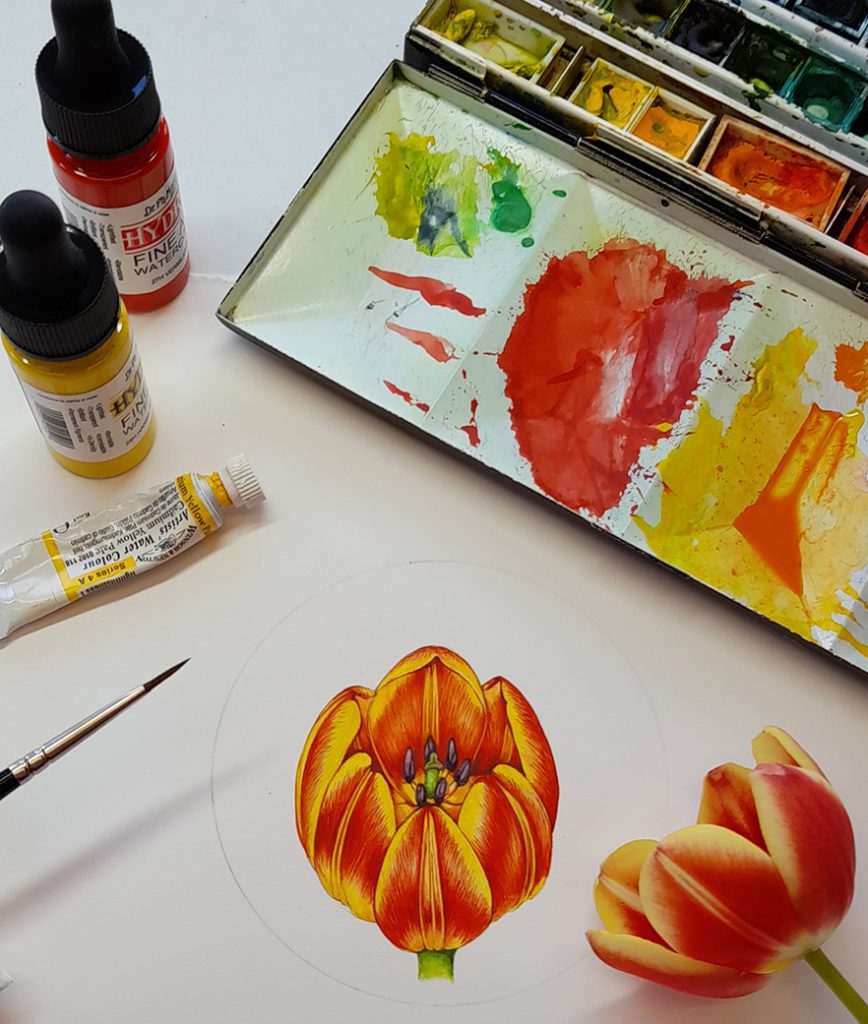
Illustration of a Tulip with specimen, paint box, and brushes
Over the past ten years I’ve taken a wide range of FSC courses. In all cases the tutors are enthusiastic and accessible, and the courses have taught me loads. Everyone on the sessions is fired up with the same passion for nature as me. It’s a comfortable and fun way to learn.
FSC Courses this year: Ants
This year I’ve fallen head first into loving ants, after a job illustrating the Wood Ants of the Cairngorm National Parks, which made me realise how little I knew about these amazing insects. One FSC course led to another. And another. I’ve now invested in a lovely new microscope and have a three day residential course on identifying UK ants lined up, with Richard Becker.
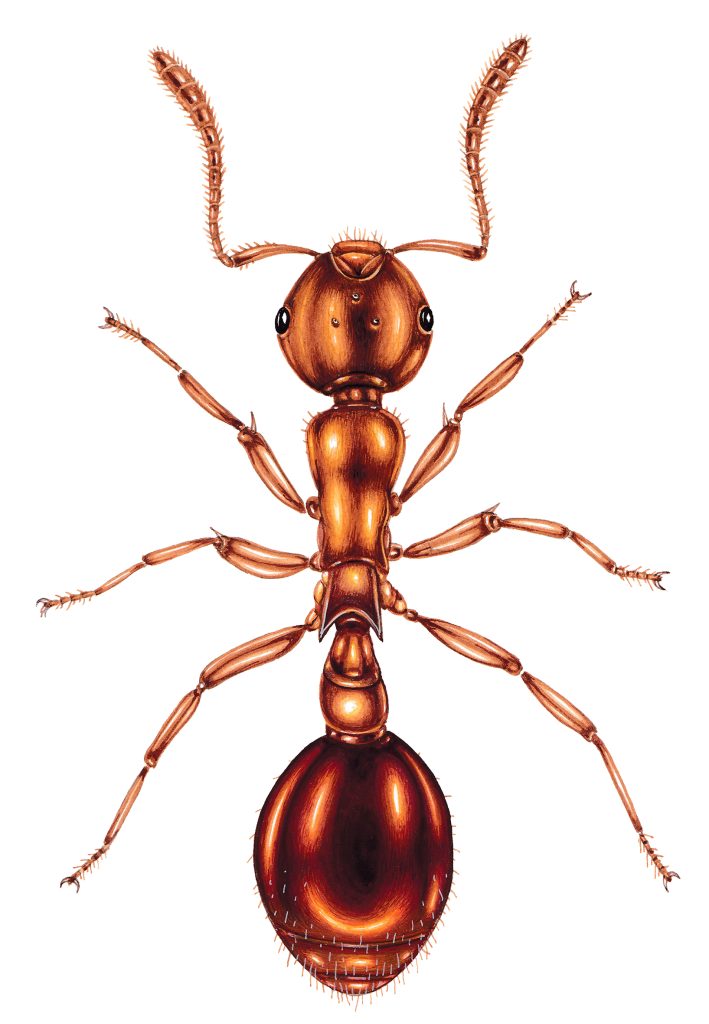
Shining Guest ant Formicoxenus nitidulus
Other ant experts that’ve got me hooked this year are Gino Brignoli and Mike Fox. See, that’s another amazing thing about these courses. You often get taught by experts in the field, scientists and ecologists who are currently working, and provide these sessions on the side. This means what we get taught is current, and relevant.
I love having the space and time to draw as I look at specimens through the microscope, and having such knowledgeable tutors on hand to help with learning and identification.
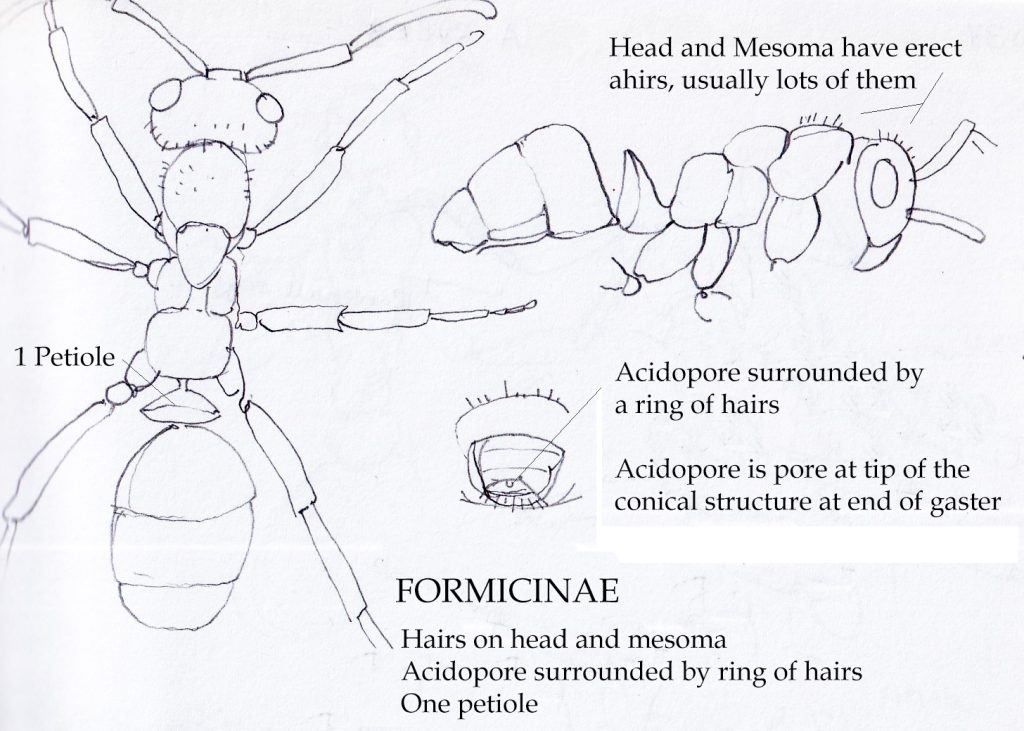
Annotated sketchbook page: Formicinae ants have hairs and an acidipore hair collar
The ant courses are part of an incredible array of online and in-person sessions offered by FSC called Biolinks, running from 2018 – 2022. Funding allowed the organisers to keep costs absurdly cheap, and meant the courses were accessible to everyone.
Other FSC Courses this year
I’ve also taken plenty of other courses not under the biolinks umbrella.
This summer I did a fabulous course on identifying grasses with Fiona Gomersall. This helped me sort my sedges from my grasses, and rushes. I also learned how to immediately spot lots of common UK grass species, both in flowering and vegetative states. This proved massively useful when I taught a two-day botanical illustration workshop on Painting Grasses at Cambridge University Botanic Gardens.
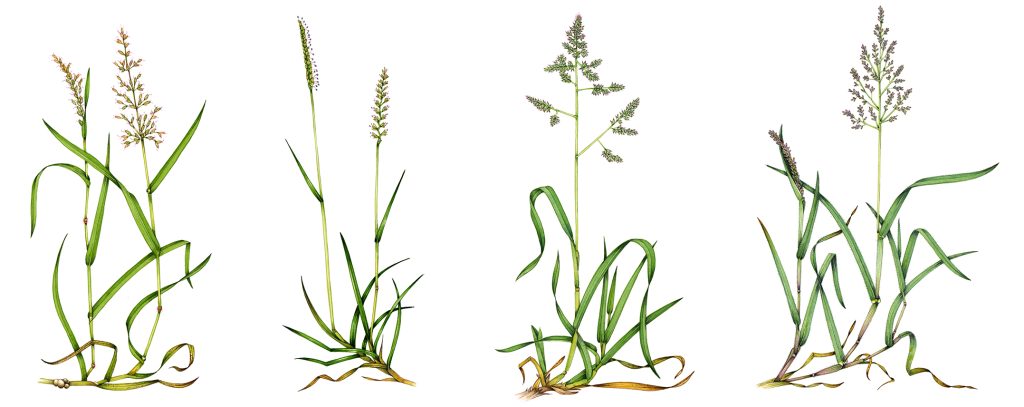
Grasses False Oat Crested Dogs-tail Cocks-foot and Yorkshire Fog
I’ve also taken courses on Social wasps with Ian Cheeseborough, and worms with Keiran Brown; accessing online ones too, on subjects as diverse as the Biodiversity of Knepp, Soil health and dung beetles, and the importance of the Yellow Meadow-ant to ecosystem health.

Earthworm Lumbricus terrestris
Past FSC Courses
Another great thing about the FSC courses is how widely spread they are, geographically. They have 24 centres across the UK, and a wide array of courses available at all of them. I’ve only been to a few sites; but want to take in Slapton Ley in Devon, Rhyd-y-creuau in North Wales, and Millport in Scotland.
In past years, I’ve loved learning about Pollinators down in Bushy Park in London, having a day in Epping Forest learning about bats, learning about Spiders at Bishop’s wood, and doing a residential course on Rocky shore ecosystems at Dale Fort.
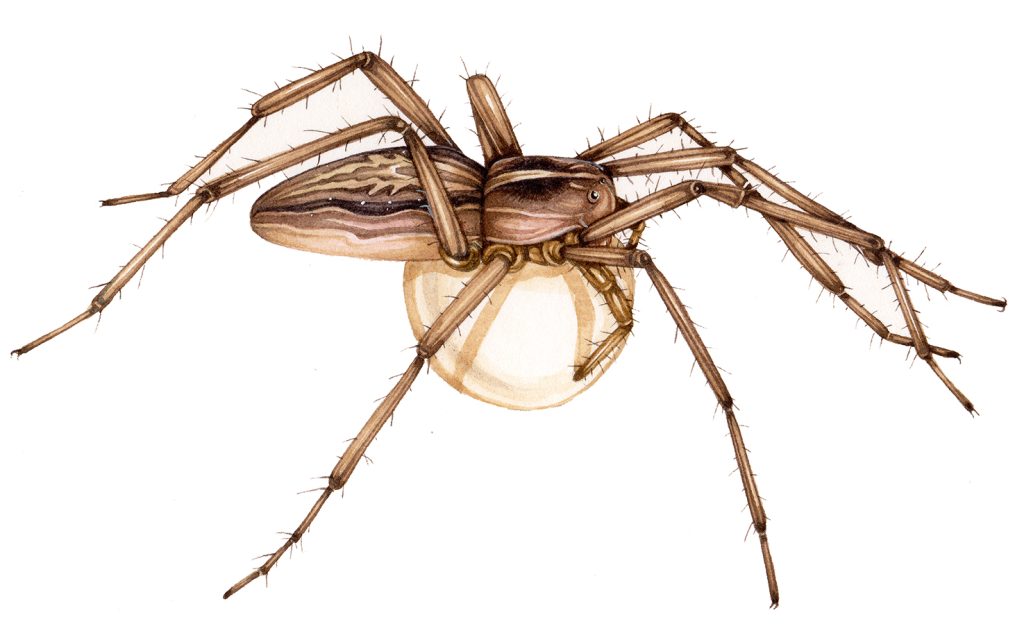
Nursery web spider Pisaura mirabilis
The focus on invertebrates reflects my favourite subject area rather than what’s on offer. And it has to be said that despite them being mammals, I was really pleased to learn lots about bats. I went with my sister; I bought her the course as a Christmas present and we both had an excellent day learning about how to help bats, UK species, and getting to use bat detectors to tell what species were swooping over a nearby lake at dusk.
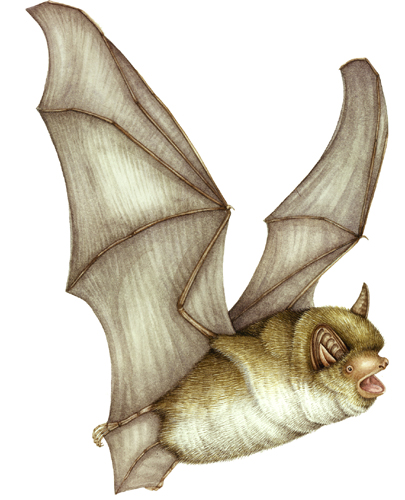
Daubenton’s bat Myotis daubentonii
A particular favourite was the Slugs course at Bishop’s Wood with Chris de Feu. Evolution of slugs, slug variety, media misrepresentation of slugs (no, really. And it was interesting too!), the fact that slugs evolved from snails not the other way around….it totally changed the way I see these maligned invertebrates.
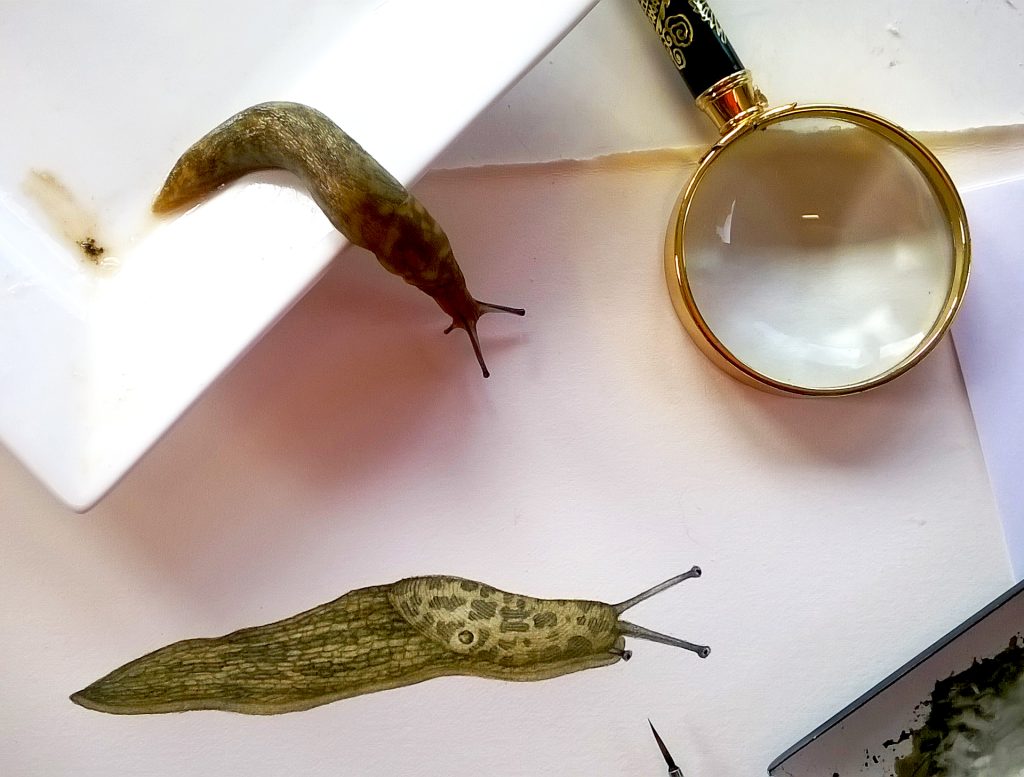
Green cellar slug Limacus maculatus live specimen examining my illustration
The Rocky shore ecosystem course was wonderful. I learned a ridiculous amount, got to paddle about and find Pipe fish and Blue ray limpets, and chatted with a lot of lovely like-minded people as well as the expert tutor, John Archer-Thompson.
The best bit was that right after the course, I was commissioned to illustrate a Rocky Shore ecosystem for The Hidden Universe by Alex Antonelli, so I had all the information needed at my fingertips.
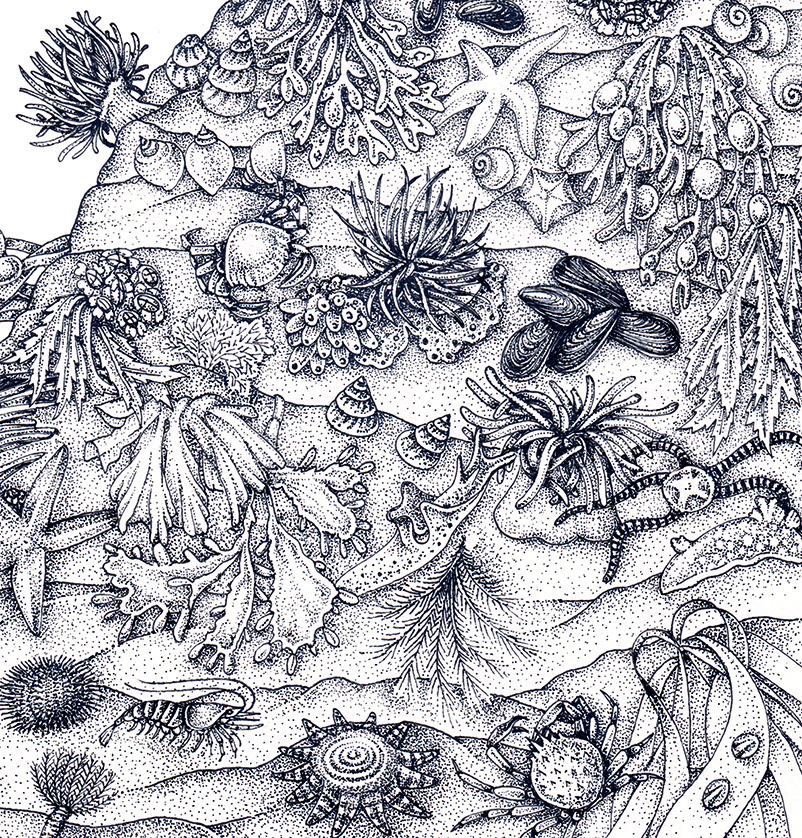
Rocky shore line ecosystem zonation of species detail
Natural History and Life-long Learning at FSC: I love it!
For me, learning about the natural world is thrilling, and fills me with wonder. It re-charges my batteries, and helps remind me why nature is so important to me on a personal and professional level. It’s also very helpful with my job. I take copious notes when I’m doing courses, and often use these to write up blogs afterwards. These provide me with invaluable reference when out of the blue I’m asked to illustrate a harvestman, or some sphagnum moss.
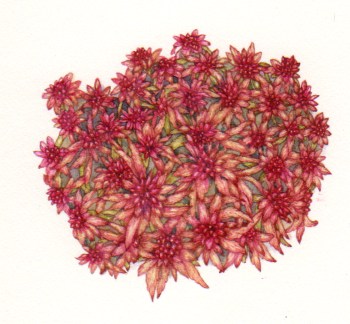
Moss: Sphagnum capillifolium
Every year I sit down with the FSC catalogue (or online) and flip through. It’s like being a child in a sweetie shop. I set a budget and mercilessly keep to it, despite temptation to throw financial cares out of the window. Often I feel like doing nothing but courses all year long. (Saying that, the courses offer great value for money, I think, even when not subsidised). Different subjects appeal at different times. I’ve barely scratched the surface of the FSC birds, mammals, and fungi courses.
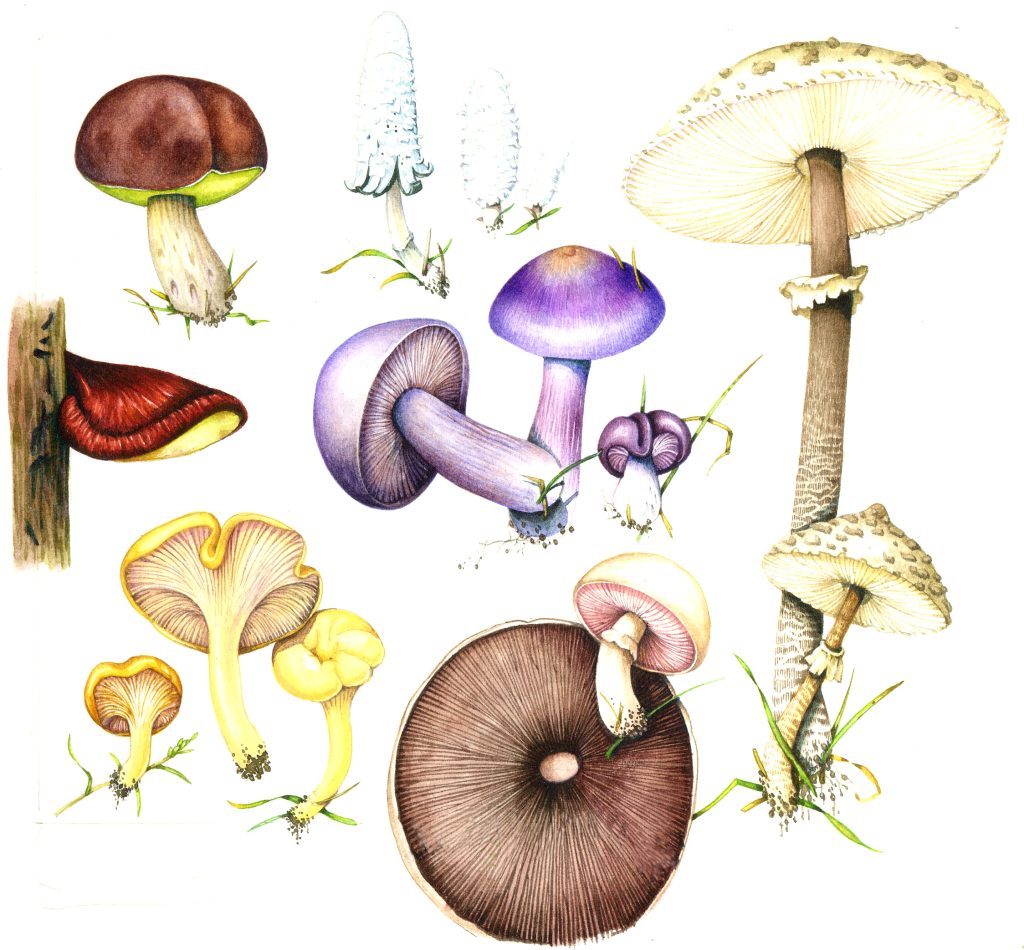
Edible fungi an array of seven edible species including the parasol
I guess that’s what I love about these courses. There’s always so much more to learn and be inspired by. It’s so easy to simply sign up and go along. And change the way you feel about a whole new corner of the natural world.


Well how about those tulips Lizzie. Wonderful colour and tone.
Regards Peter
Thanks Peter!